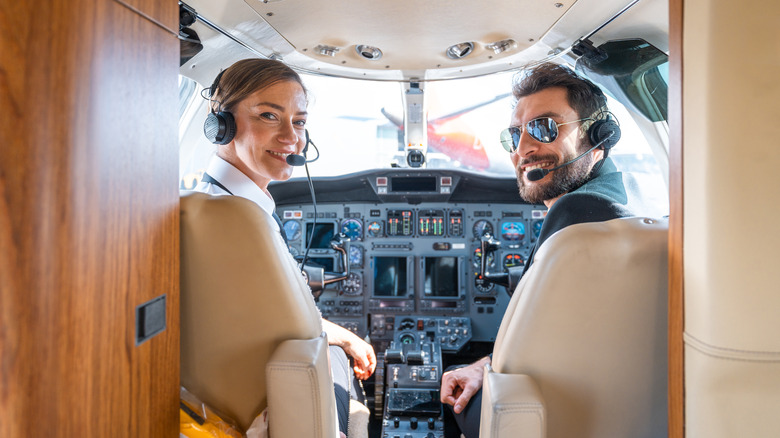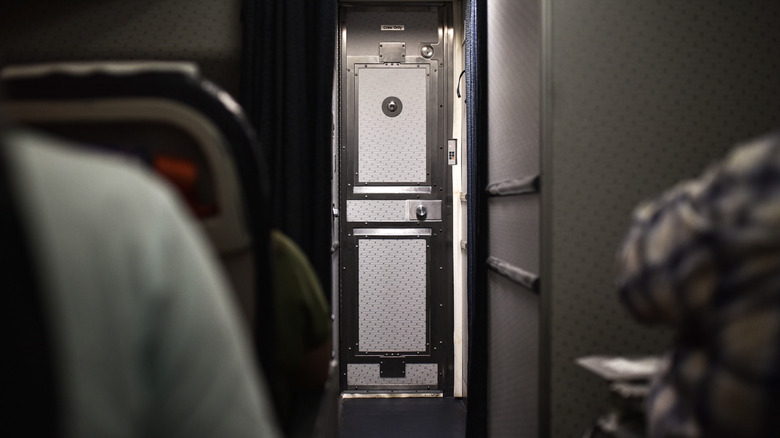The Surprising Reason Pilots Keep The Cockpit Door Open During Boarding
Traveling on an airplane is full of mysteries, like why you need to keep the shades open during takeoff and landing. Luckily, one of the secrets that pilots keep from passengers is a mystery we can solve quite easily. If you've ever glanced toward the cockpit while boarding an airplane, you may have noticed an open cockpit door. Why do pilots leave it open at boarding? The answer is simple — it's all about communication.
There are a lot of moving parts involved in takeoff, which makes it critical for the pilot, flight staff, and ground crew to be able to exchange information quickly and effectively. Plainly put, an open door just makes it easier. Aviation expert Corry Lane broke it down for Travel + Leisure. Lane, who is the director of safety for a private jet charter company, explained, "Pilots and flight attendants are actively communicating about flight details, passenger count, fuel status, weather, and any last-minute changes." Additionally, he noted that the ground crew may need to deliver paperwork or perform final equipment checks before the plane pushes back from the gate.
Of course, with few exceptions, the cockpit door must be fully closed and locked while the plane is in operation. And as an increased safety measure after 9/11, the Federal Aviation Administration (FAA) requires hardened doors that are more difficult for intruders to breach. Not only does this keep passengers safer, but it also allows the pilots to concentrate on what they do best — fly.
Secondary barriers are about to make commercial airplanes more secure
Safety is always a serious consideration on any plane, which is why Congress proposed secondary barriers that will keep the cockpit secure when the pilot needs to leave to use the restroom or the flight crew is served their meals. These secondary barriers have been in the works for years and are finally being rolled out by some airlines, including Southwest. Built as retractable gates, they can be easily closed to block the front galley and flight deck when the cockpit door needs to be opened.
In 2023, the FAA said that it would begin enforcing a rule requiring any new aircraft by US carriers to have a secondary barrier, with a deadline of August 25, 2025, for implementation. After pushback from a trade group representing major US carriers, including American Airlines, Delta, and United Airlines, which stated that the FAA hadn't certified a second barrier design, the date has been pushed to 2026.
All of this means that everyone will soon be safer in the skies and can simply focus on whatever awaits them at their destination. By the way, if you're traveling with your child and safety talk has you thinking they won't be able to visit the cockpit, don't worry. Many pilots still give children tours of the cockpit — just ask the flight attendant if it's possible as you board.

